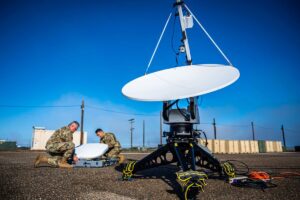
The U.S. Space Force’s Space Training and Readiness Command (STARCOM) is examining how to pursue more live exercises. While the other military services have had their own dedicated, live test locations, including the U.S. Air Force's Nevada Test and Training Range, "it's a little hard for us," Maj. Gen Shawn Bratton, the head of STARCOM, told a Space Force Association virtual forum on July 18th. "We can't just sequester a portion of the GEO [geosynchronous orbit] belt and say, 'Hey.…














